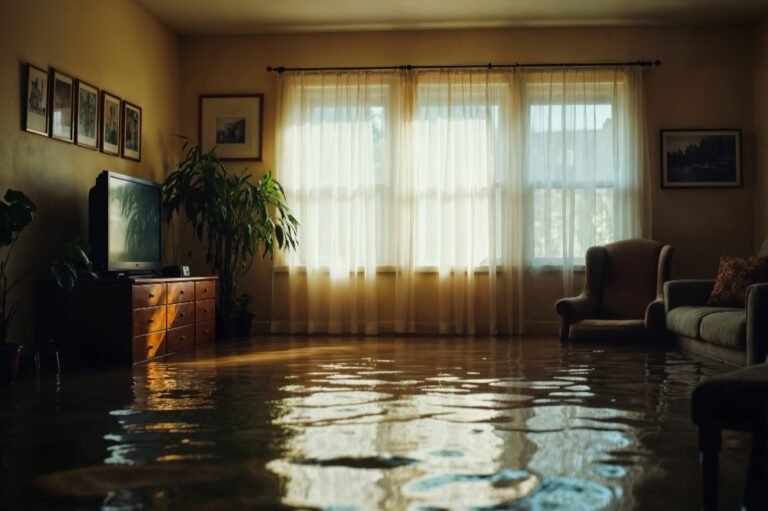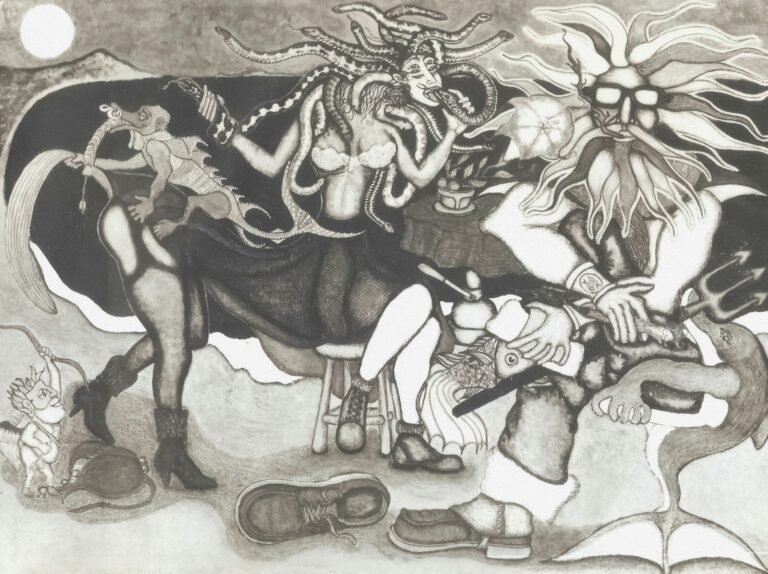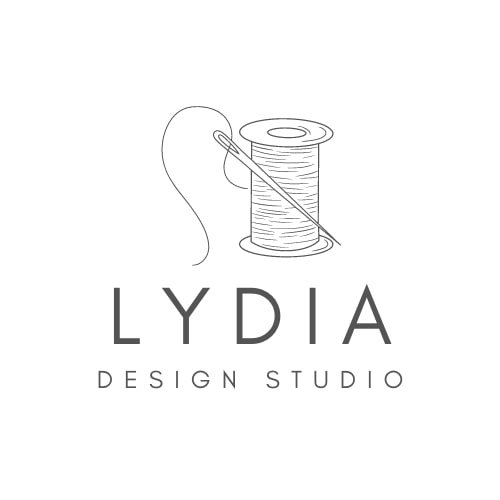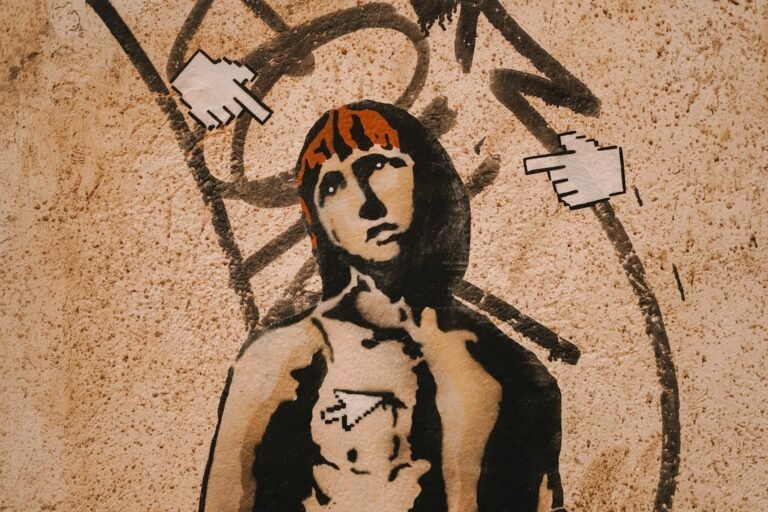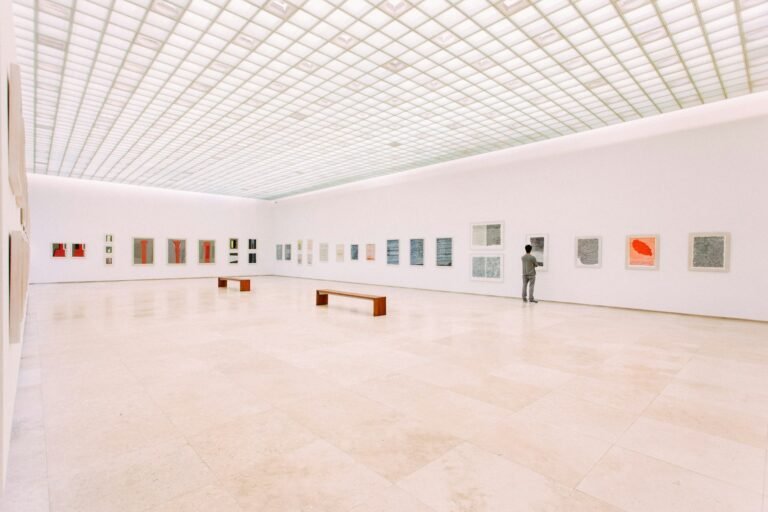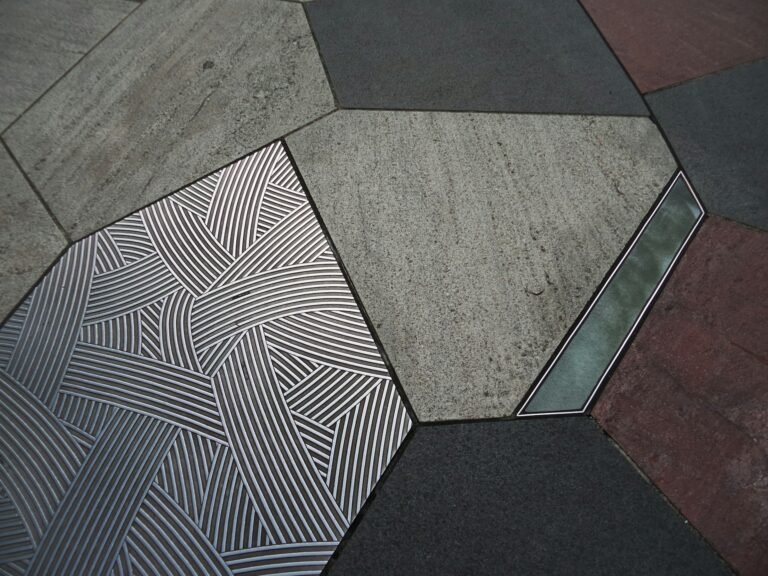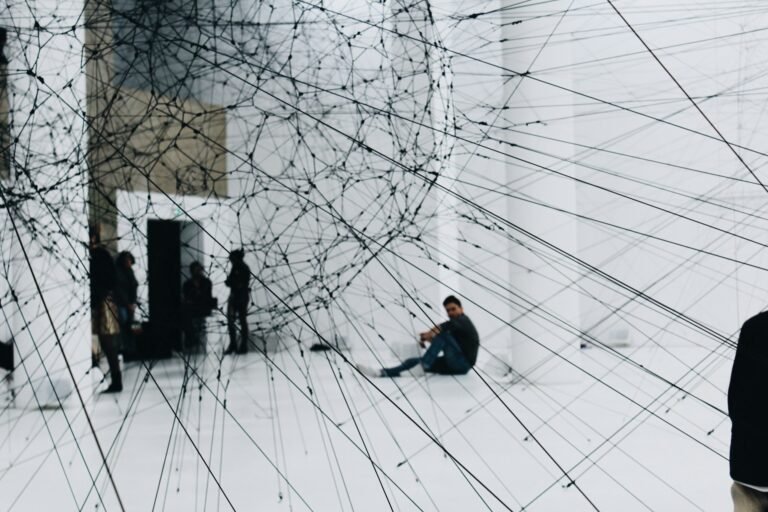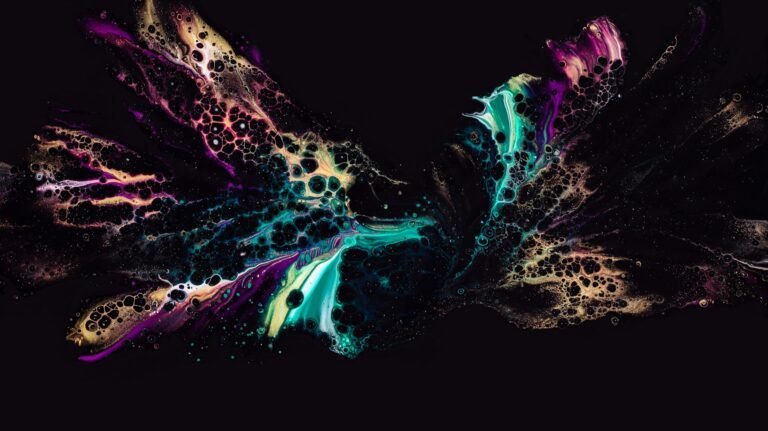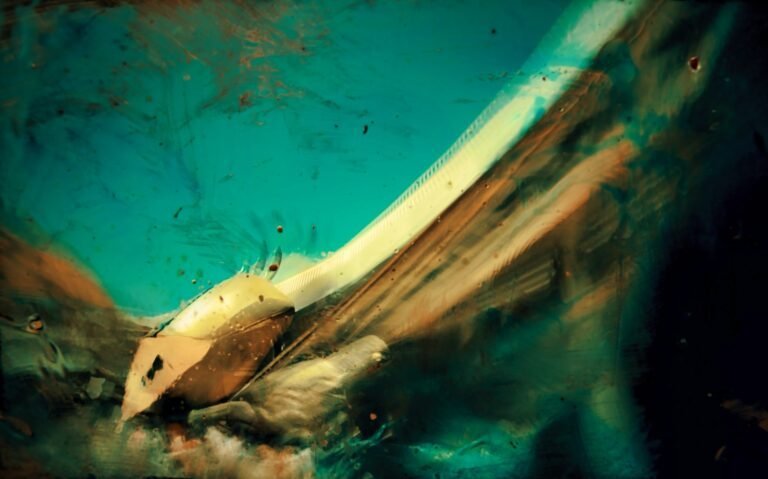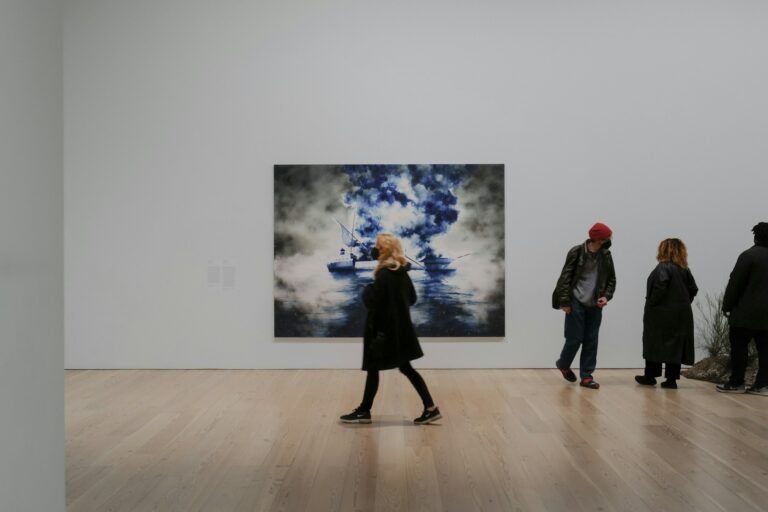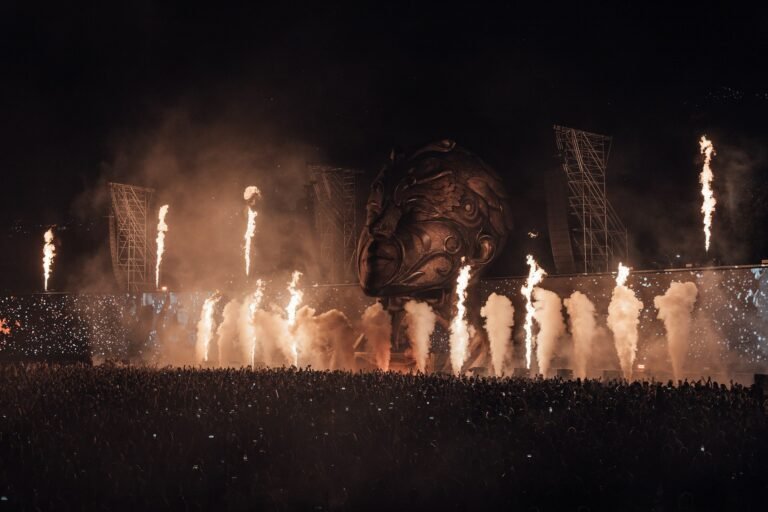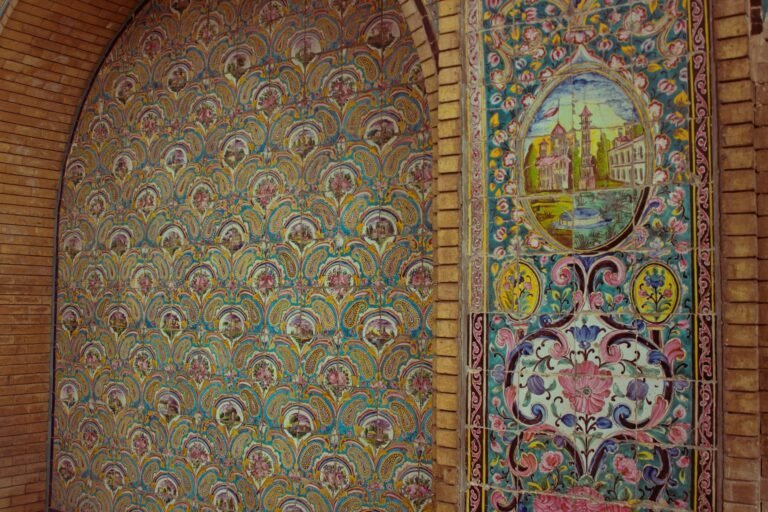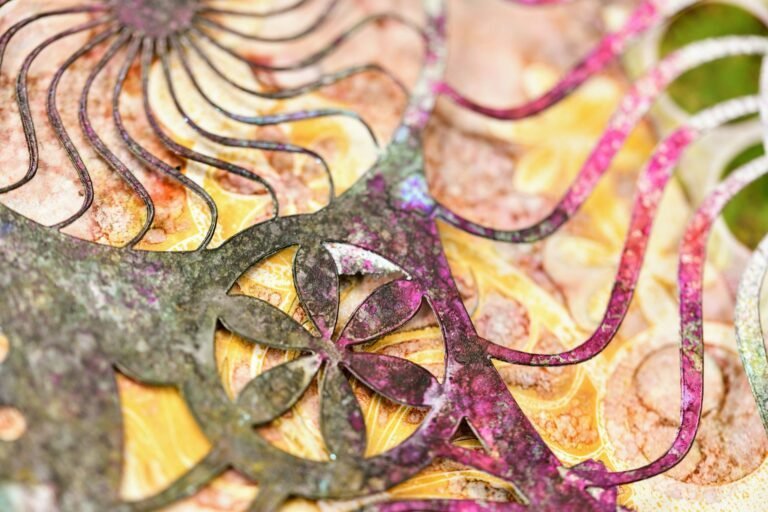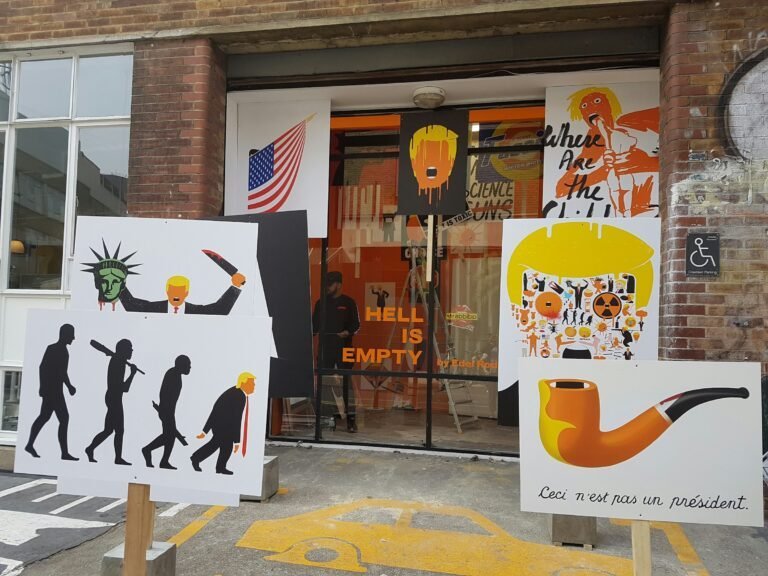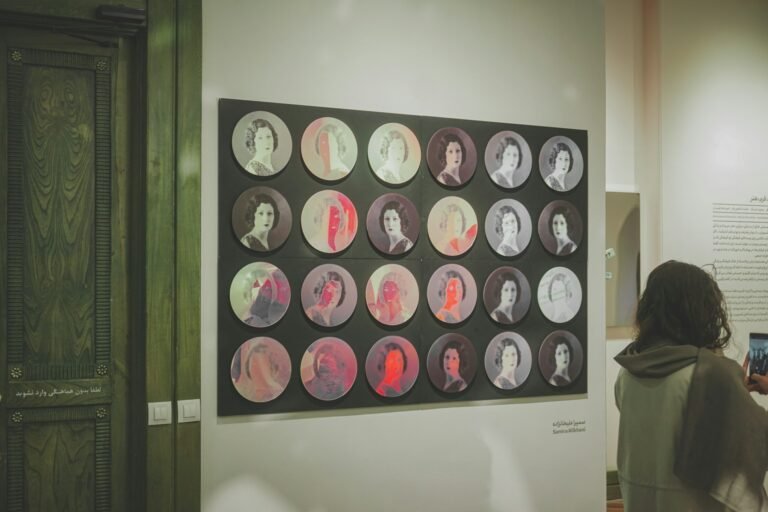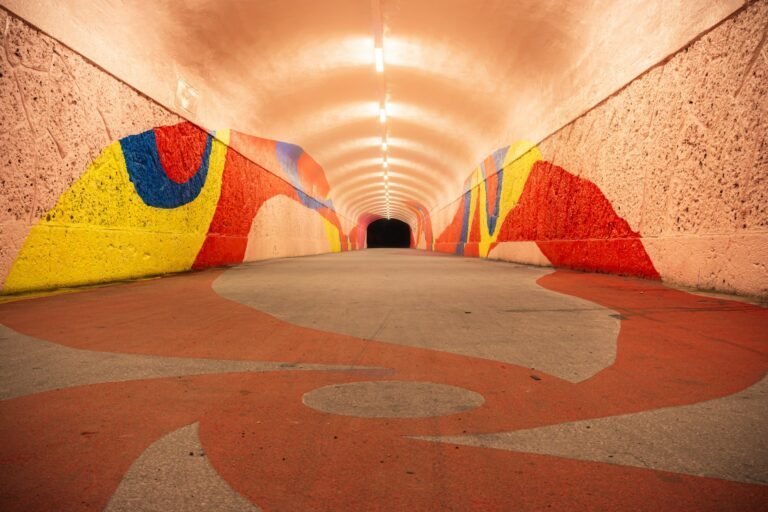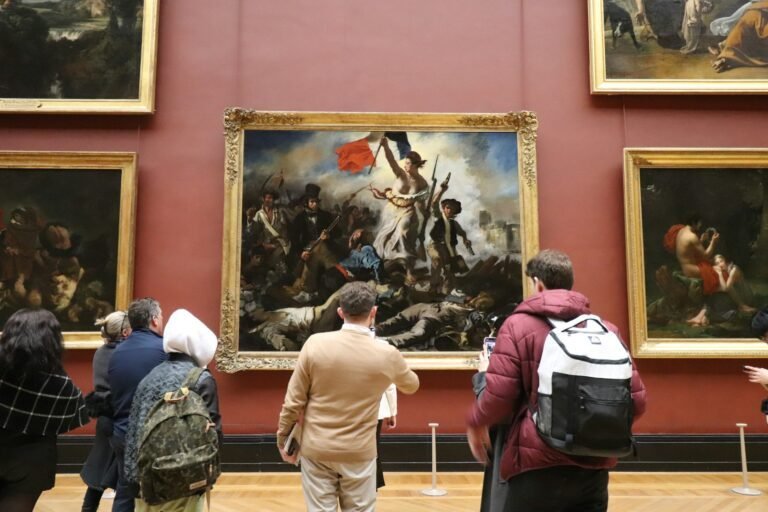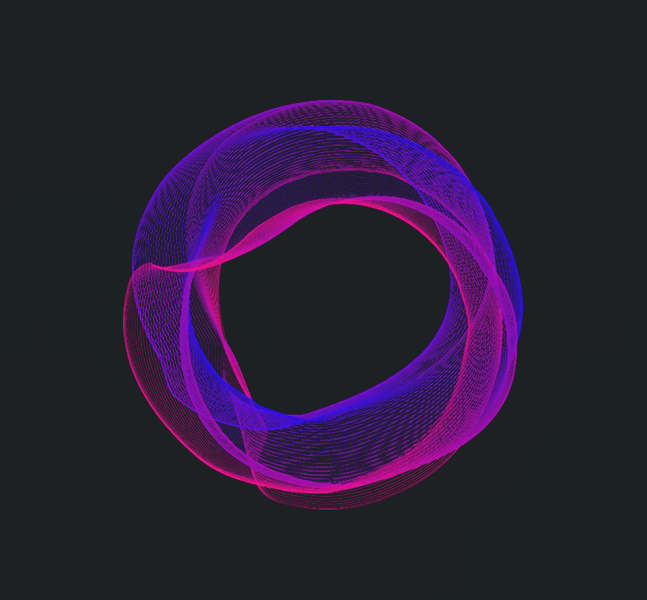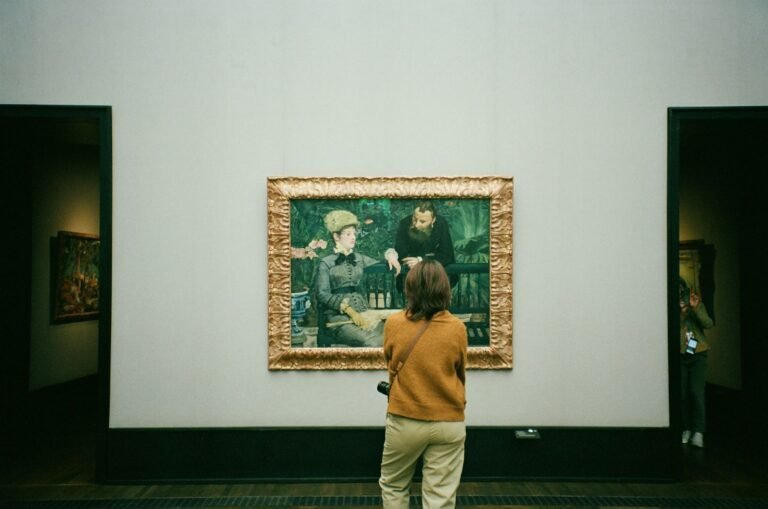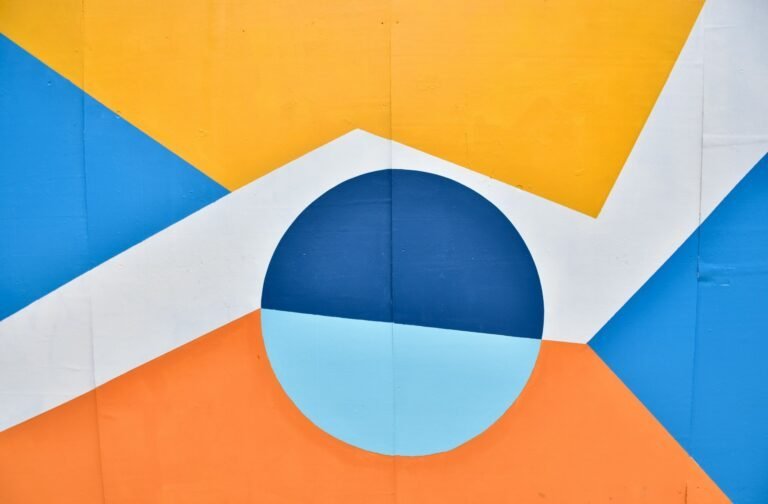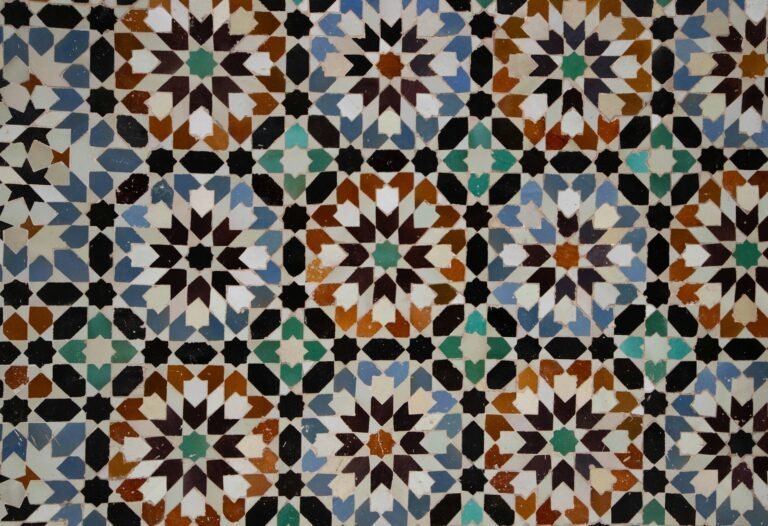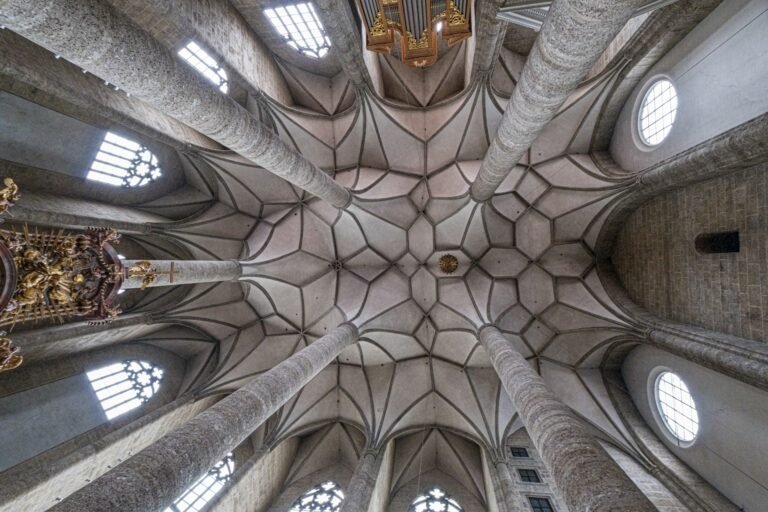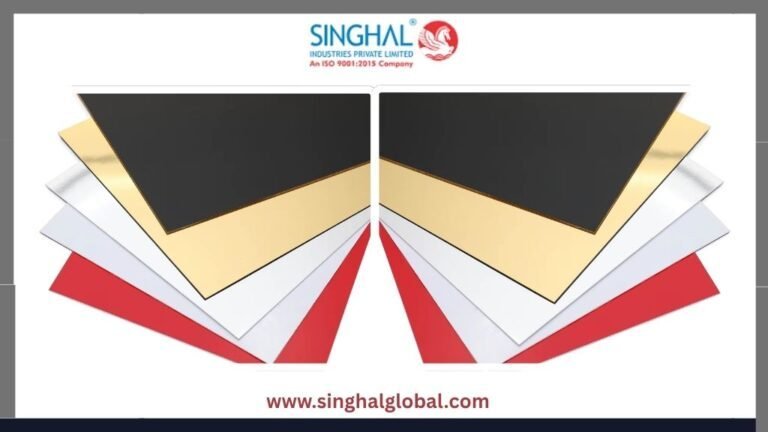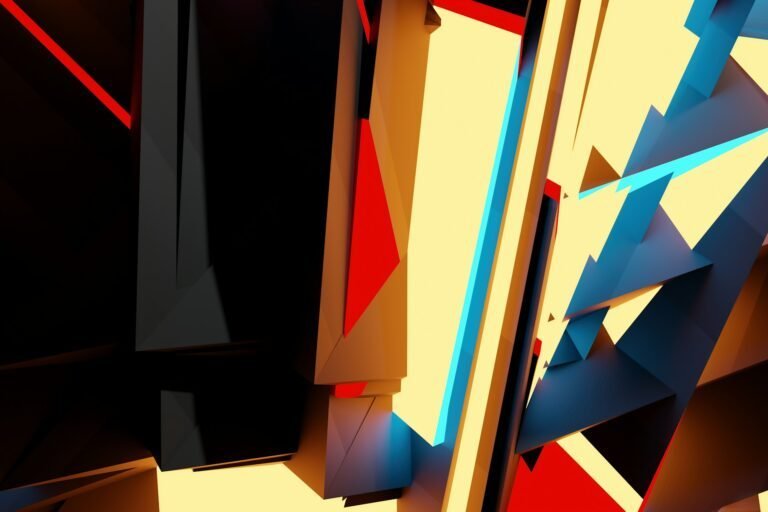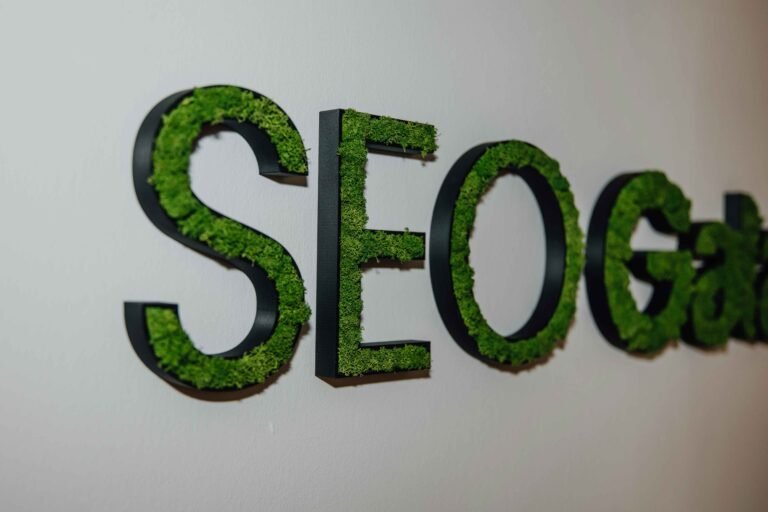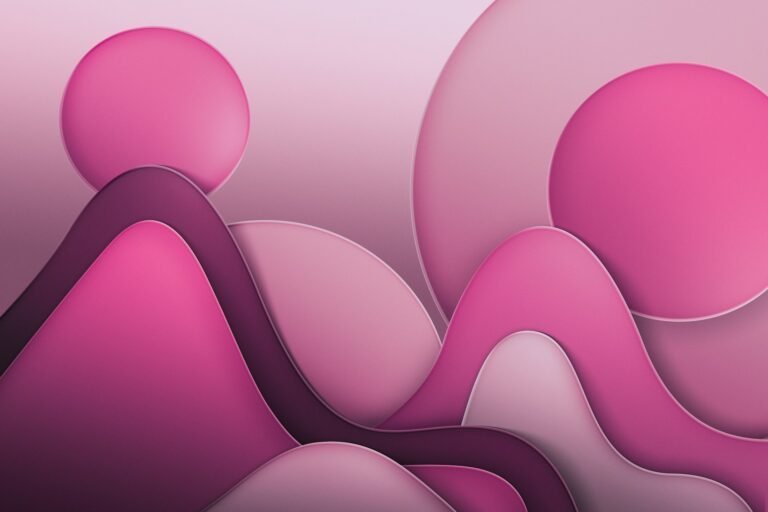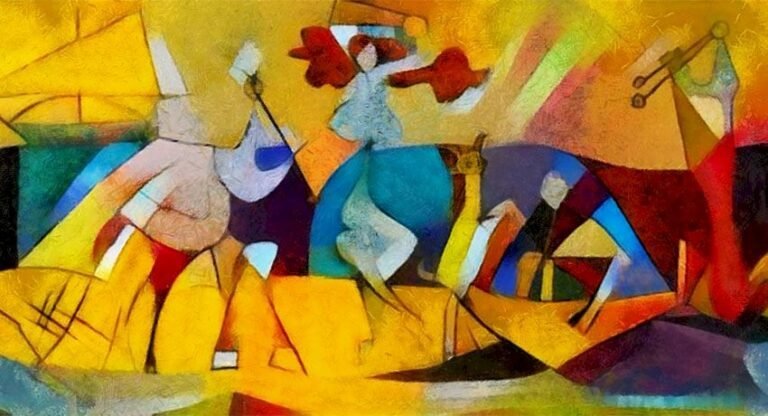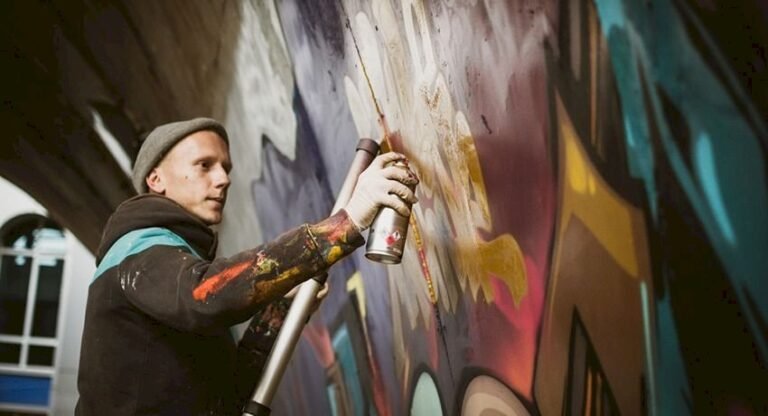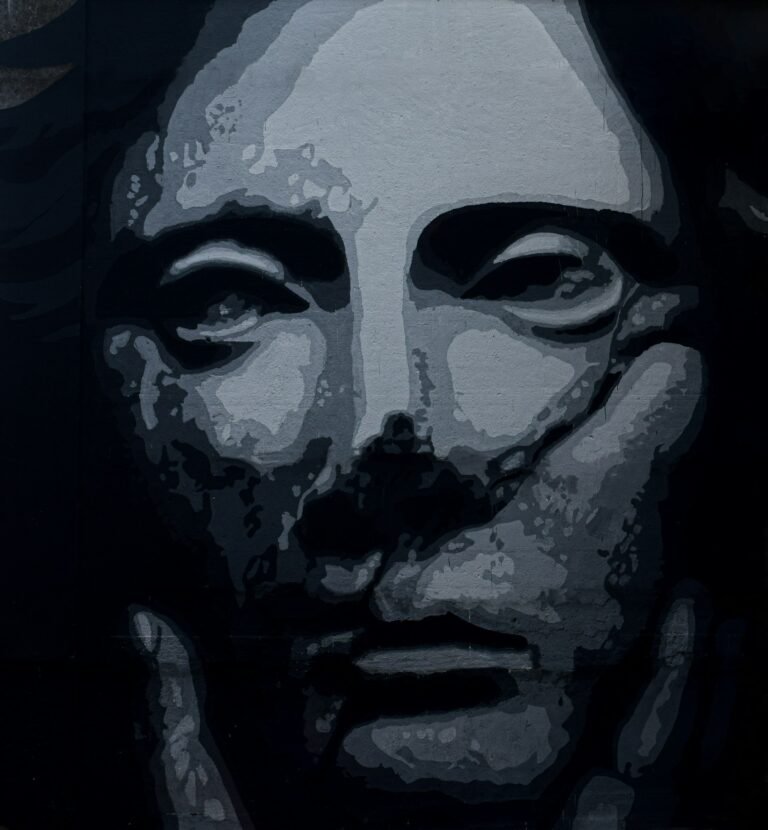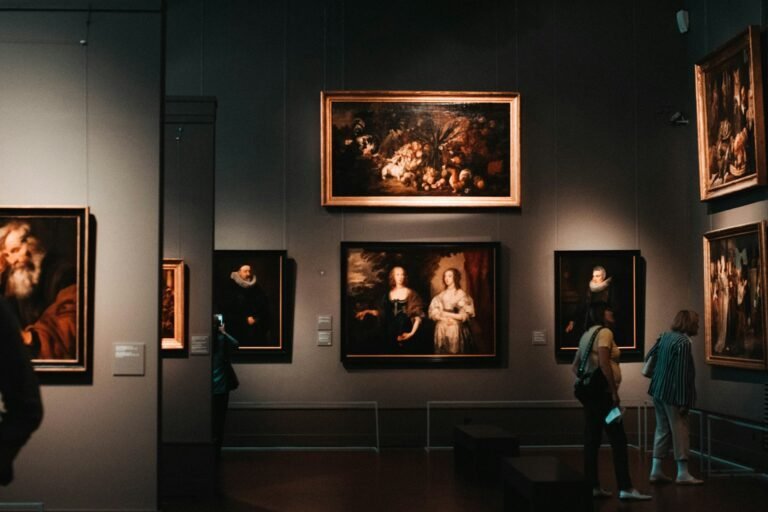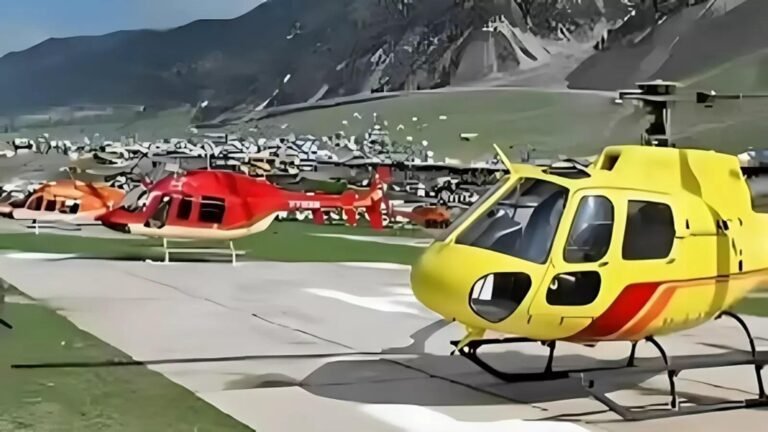Anamorphic Art and Its Technique
Art has long served as a powerful medium for human expression, innovation, and perception. Among the many fascinating techniques within the visual arts, anamorphic art holds a special place due to its ability to challenge and manipulate the way we see. At its core, anamorphic art is a form of perspective-based visual art that appears distorted unless viewed from a specific angle or through a particular device, such as a mirror. This captivating interplay between illusion and perception not only captivates viewers but also engages the artist in a complex and rewarding creative process. This essay delves deep into the world of anamorphic art, exploring its definition, history, underlying principles, tools, and notable examples, along with the various techniques artists employ to bring such illusions to life.
Understanding Anamorphosis
The term “anamorphosis” derives from the Greek words ana, meaning “again,” and morphe, meaning “form” or “shape.” Essentially, anamorphic art refers to images that have been intentionally distorted through a specific perspective system. When viewed from the correct angle or with the help of an optical instrument such as a cylindrical mirror, these images appear in their proper form. There are primarily two types of anamorphosis: oblique anamorphosis and catoptric (mirror) anamorphosis.
Oblique anamorphosis relies on viewing the image from a sharply slanted angle. This form is commonly used in street art or murals, where the viewer must stand at a particular location to perceive the image correctly. In contrast, catoptric anamorphosis uses curved mirrors—typically cylindrical or conical—to reconstruct the distorted image in the viewer’s reflection. This technique was especially popular during the Renaissance and Baroque periods.
Anamorphic art is not simply about creating distorted images; it’s a method of bending and reinterpreting visual space. The artist must have a strong grasp of geometry, perspective, and optics. The success of an anamorphic artwork depends entirely on the artist’s ability to precisely calculate how the image will appear when reconstructed from a specific viewpoint.
A Brief History of Anamorphic Art
The origins of anamorphic art can be traced back to the early Renaissance period, a time when artists and scientists were increasingly fascinated by the laws of perspective and optics. One of the earliest known examples of anamorphosis appears in the notebooks of Leonardo da Vinci, who experimented with various methods of optical distortion.
However, the technique gained broader recognition in the 16th and 17th centuries. A famous example is Hans Holbein the Younger’s painting The Ambassadors (1533), which contains a distorted image of a skull at the bottom of the composition. When viewed from a sharp angle, the skull becomes clearly visible, symbolizing mortality and the inevitability of death—a theme common in Renaissance art.
During the Baroque period, anamorphic images were sometimes used in religious and political contexts. For instance, artists would create hidden religious icons that could only be viewed correctly under specific conditions. This allowed them to express their beliefs in times of censorship or persecution.
By the 18th century, the use of anamorphosis declined, only to be revived in the 20th and 21st centuries by contemporary artists and street performers. With the advent of digital technology, anamorphic art has found a new playground, allowing creators to simulate or produce highly complex optical illusions that were once incredibly time-consuming to produce by hand.
The Science Behind the Illusion
Anamorphic art relies heavily on the principles of linear perspective, a technique developed during the Renaissance to create the illusion of depth on a flat surface. In a standard linear perspective, objects appear smaller as they recede into the distance, converging at a vanishing point. Anamorphic art uses this idea but exaggerates the distortions so that the image only resolves when viewed from a specific vantage point.
Mathematically, creating an anamorphic image involves projecting a regular image onto a distorted plane. This projection can be calculated using geometry, where every point on the image is mapped to a corresponding point on the anamorphic plane, using lines that radiate from the observer’s viewpoint. When the viewer looks from that exact spot, the lines of sight realign with the original image, revealing the undistorted form.
In mirror anamorphosis, the distortion must be calculated based on the reflective surface’s curvature. The artist draws the distorted image in such a way that it appears undistorted when reflected on the cylindrical or conical mirror. This technique demands a deep understanding of optics and mirror geometry, making it one of the more technically challenging forms of anamorphic art.
Techniques and Tools Used in Anamorphic Art
Creating anamorphic art is both a creative and technical process. The following are key techniques and tools used by artists to achieve these incredible illusions:
- Grid Mapping Method: This involves placing a grid over the original undistorted image and then projecting the grid onto the surface where the anamorphic image will be created. Each square is then stretched or warped according to the viewer’s vantage point. This is one of the most common methods used, especially for large-scale street art.
- Digital Projection: Modern anamorphic artists often use digital projectors to simulate the distorted image on a surface. The artist then traces and fills in the projected image. This method is particularly useful for precise alignment in public installations or murals.
- Ray Tracing and Computer Software: In digital environments, ray tracing algorithms help calculate how light would interact with surfaces from specific viewpoints. Artists can use 3D modeling software like Blender or AutoCAD to simulate the distortion, then export the design for manual or machine rendering.
- Mirror Construction for Catoptric Art: Artists must create custom reflective surfaces or carefully position mirrors for this kind of art. The placement and shape of the mirror are crucial to how the image is perceived. Once the mirror is in place, the artist draws the distorted image that will reflect correctly.
- Chalk and Street Surfaces: For pavement or street anamorphosis, artists often use chalk or washable paint. These mediums are quick to apply and adjust, allowing the artist to work flexibly. Since the viewer must stand at a specific point to see the illusion, artists often place a marker or use camera framing for best results.
- Photography and Lens Work: Sometimes, anamorphic art is created solely for photographic documentation. The final undistorted image only exists when captured from a certain lens angle or camera height. This allows for highly complex illusions that might not be effective or visible in person without the lens.
Modern Applications and Contemporary Artists
In today’s world, anamorphic art is more than just an artistic curiosity—it is a powerful tool for advertising, public installations, political commentary, and digital storytelling. Contemporary artists have expanded its scope beyond canvases and murals into three-dimensional spaces and multimedia environments.
One of the most prominent modern anamorphic artists is Julian Beever, known for his pavement chalk drawings that create stunning 3D illusions when photographed from the correct angle. His works include realistic portrayals of swimming pools on sidewalks or giant bottles standing upright on flat surfaces.
Another influential figure is Felice Varini, whose large-scale geometric illusions span entire buildings or rooms. Varini’s work often appears as fragmented shapes unless viewed from a precise vantage point, where they align into perfect forms. Unlike traditional artists who disguise their technique, Varini embraces the process by making the illusion and its disjointed fragments part of the artistic message.
Digital artists have also embraced anamorphosis. With the rise of augmented reality (AR), creators can design virtual anamorphic illusions that only appear when viewed through smartphones or AR glasses. This opens new dimensions for interactivity and audience engagement, making the technique even more immersive and widespread.
Psychological and Philosophical Dimensions
Anamorphic art isn’t merely a visual trick—it also engages deeply with the psychology of perception and the philosophy of reality. By creating images that only exist from certain viewpoints, anamorphic art invites viewers to question the reliability of their own perception. What is real? What is illusion? How much of what we see is shaped by our position or perspective?
In this way, anamorphic art reflects deeper truths about human experience. Just as an image can appear distorted or clear depending on where one stands, so too can our understanding of truth, beauty, and meaning vary based on context. It is a powerful metaphor for subjectivity, a concept explored by both philosophers and psychologists for centuries.
Anamorphic art also challenges the traditional relationship between artist and viewer. Unlike a painting that can be appreciated from any angle, an anamorphic piece demands active participation. The viewer must move, crouch, tilt their head, or use a device to see the intended image. This interaction makes the viewer a co-creator in the artistic experience, blurring the boundaries between observer and participant.
Educational and Practical Applications
Beyond its aesthetic value, anamorphic art serves educational purposes in teaching geometry, optics, and art history. By engaging students in creating their own anamorphic drawings, educators can provide a hands-on way to understand perspective and visual transformation.
In architecture and design, anamorphic principles are used to manipulate spatial perception. For instance, decorative illusions can make small spaces appear larger or mask unsightly structural elements. Urban planners and advertisers also use these techniques to direct attention or create memorable visual experiences in public spaces.
In film and photography, anamorphic lenses are used to capture a wider field of view. These lenses squeeze the image during recording and then decompress it during projection, preserving image quality while enabling wide-screen formats. Although not the same as anamorphic art in the classical sense, this application stems from similar principles of image transformation.
Challenges and Limitations
Despite its allure, anamorphic art poses several challenges. The need for precise calculation and viewpoint-dependent viewing can limit accessibility. For instance, a piece that looks stunning from one location may appear meaningless or even confusing from another. This can be problematic in spaces with multiple audience vantage points, such as galleries or public squares.
Moreover, environmental factors like lighting, shadows, and physical obstructions can interfere with the illusion. Artists must carefully plan installations to ensure the integrity of the piece remains intact over time. For outdoor works, weathering and public interaction can degrade the image, requiring ongoing maintenance or eventual removal.
From a conceptual standpoint, some critics argue that anamorphic art relies too heavily on gimmickry and lacks emotional depth. However, many contemporary artists have defied this notion by integrating complex narratives, sociopolitical commentary, and immersive storytelling into their anamorphic creations.
Conclusion
Anamorphic art represents a fascinating fusion of art, science, and perception. It challenges the viewer to engage actively, to look beyond the obvious, and to reconsider the nature of visual reality. Whether executed with chalk on a sidewalk, paint on a wall, or pixels on a screen, anamorphic art continues to evolve and inspire. From its Renaissance origins to its modern digital incarnations, this technique speaks to the timeless human desire to play with space, surprise the senses, and explore the boundaries of what is seen and unseen.
Through its demanding techniques and thought-provoking results, anamorphic art remains a testament to the endless possibilities that emerge when creativity meets geometry. It serves not only as a visual spectacle but also as a philosophical exploration—reminding us that sometimes, seeing is not believing, unless you’re standing in the right place.


















































